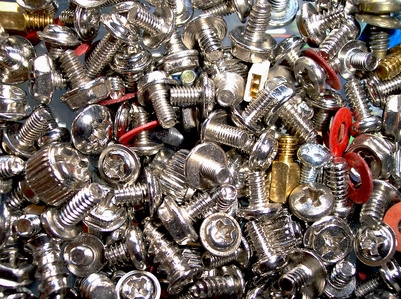
Nuts and bolts shear at certain levels of force. The materials being joined can be damaged if too much torque is applied. You should always use a torque wrench for applying the proper amount of force to a nut and bolt to avoid damaging the materials or the bolts. Torque specifications for nuts include applying torque, the amount of torque, and the proper installation of nuts and bolts.
Proper application of torque requires delicate handling of the wrench. You should always hand-tighten nuts before applying any torque. Fast, rapid movements multiple the amount of force applied and can shatter or damage the nut. Attach a torque wrench set to the proper level and use slow, steady movements until you reach the desired torque. When checking torque, use a beam or dial torque wrench. Use slow movement until the nut moves slightly. The gauge on the tool will show the amount of torque being applied at that moment, which will tell you how much torque is present on the bolt.
The amount of torque to be applied to a nut depends upon the materials of the nut, the bolt and the joining surfaces. Most vehicles will have metal-to-metal contact, which allows for higher levels of torque to be applied to fasteners. Plugs use less torque because the threads of the nut are actually embedded into the pan to which the plug attaches. Lug nuts typically use between 80 and 120 foot-pounds of torque. Engine bolts, such as the manifolds or pulleys, use between 30 and 60 foot-pounds of torque. Retaining bolts, like the U-bolts on the axles, use around 100 foot-pounds. Delicate items, such as toilets, computer components and faucets, use between 5 and 20 foot-pounds of torque. Consult the owner's manual or the manufacturer for the specific torque for your vehicle or product.
Throwing an old nut onto a bolt and assuming it will be properly tightened can lead to damage to the nut and bolt, as well as potential damage to the underlying material. The threads of both the nut and bolt should be clean and free of corrosion or rust. The threads should be evenly spaced. If there is any damage to the threads, you should replace the nut or bolt. Do not use lubricants to attach a nut, unless directed by the manufacturer, as the lubricants will give false readings to a torque wrench. Hand-tighten nuts first. Use socket wrenches until the nut is firmly in place. A torque wrench should be used to properly seat the nut onto the bolt.